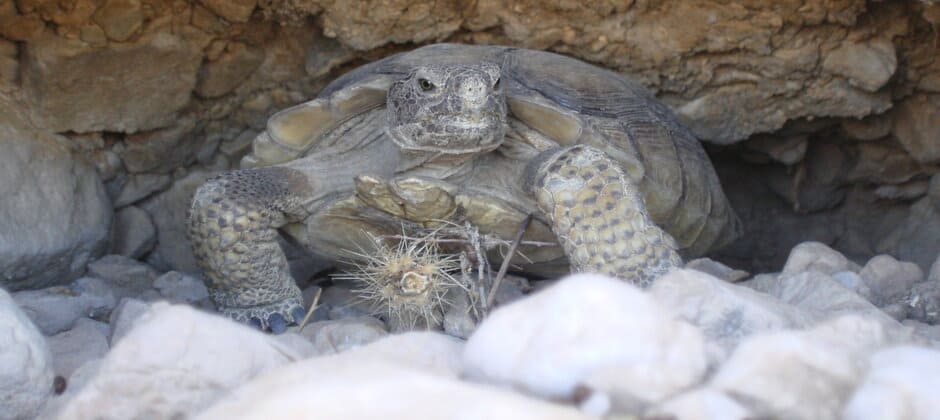Share this article
Genetic diversity helps predict tortoise translocation success
When scientists reintroduce animals to augment populations, they often take individuals from areas close to the reintroduction site.
“There’s this idea to not move animals outside of their native population grouping,” said Peter Scott, an assistant professor at West Texas A&M University.
But as Scott looked at translocation efforts for Mojave desert tortoises (Gopherus agassizii) in Nevada, he found distance wasn’t the key to success. Genetic diversity was.
“Those with more variation do a better job of surviving potentially stressful translocations than those that have less variation,” said Scott, lead author of the study published in Science.
Some of his co-authors were involved in experimental translocation of tortoises to an area called the Large Scale Translocation Site in southwestern Nevada from 1997 to 2014. The U.S. Fish and Wildlife Service moved more than 9,100 Mojave desert tortoises to the 100-square-kilometer fenced area, which already contained about 1,500 desert tortoises. Many of the translocated tortoises had been surrendered pets or tortoises that were displaced as a result of development. Mojave desert tortoises are federally listed as threatened under the Endangered Species Act, and translocation is one way scientists hope to help conserve the species.
USFWS biologists wondered what would happen if they opened up the fence to allow tortoises to come in and out of the area. Would it do harm to the tortoises by releasing animals from different origins with different genetics, or would it augment the population? When Scott got on board with the project, he was assigned to conduct genetic tests similar to “23 and me” or “ancestry.com” on the tortoises to figure out where they came from.
Scott and his colleagues paired these tests with a map showing genetic differentiation across the tortoises’ entire range. From this, they could infer where the tortoises originated and how far they came from the Large Scale Translocation Site. They found that neither distance from the new site nor the tortoises’ origin impacted their survival. Instead, they found, genetic diversity “came up a strong predictor of survivorship.”
The importance of genetic diversity wasn’t too surprising, Scott said. Biologists know that when populations become small, they become inbred, like with Florida panthers (Puma concolor stanleyana), which have experienced a variety of health problems due to their limited genetic diversity, prompting managers to seek new genes from outside sources to augment populations.
“The importance of genetic diversity has been an important discussion for folks in conservation biology, but using it as an indicator for translocation success hadn’t been explicitly looked at like this before.”
While this is one indication of translocation success in Mojave desert tortoises — and probably other species as well — other factors also need to be taken into account, Scott said, such as how animals were released and what season they were released.
“The hope is this can be one more metric that can be used,” he said.
Header Image:
Researchers found genetic diversity was key to Mojave desert tortoises translocation success.
Credit: Kimberleigh J. Field








